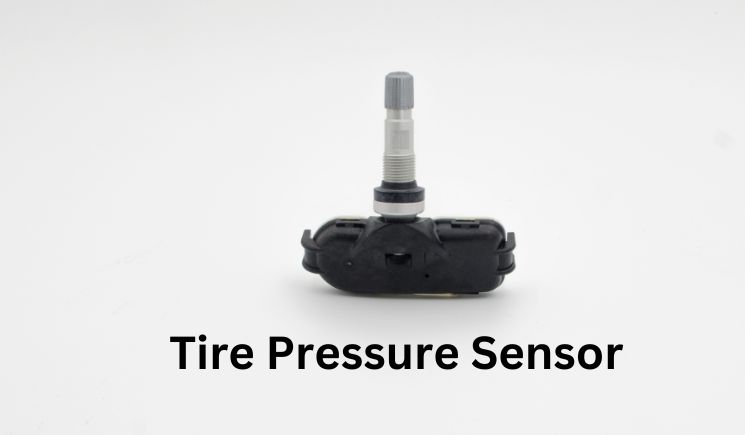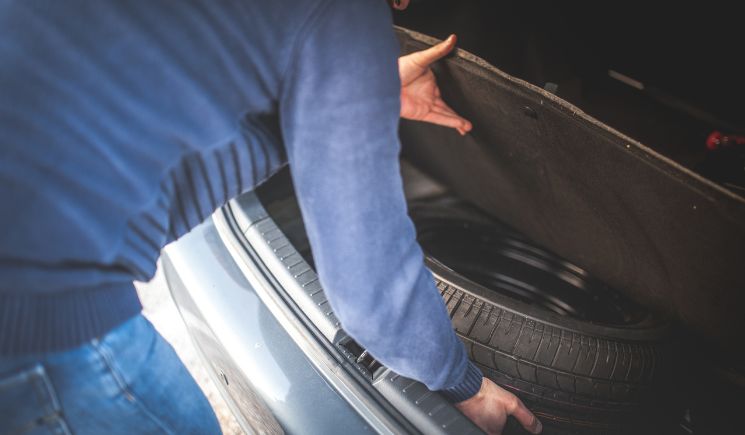Car Feels Floaty After New Tires

Driving down the highway, you feel like your car is floating in midair.
You’ve just had new tires installed – could that be causing this strange sensation?
If so what’s going on and how can it be fixed?
This article takes a closer look at why cars sometimes feel ‘floaty’ after getting new tires.
We’ll discuss potential causes and provide tips to get back that smooth ride again.
Table of Contents
- Tire Inflation
- Tire Balance
- Wheel Alignment
- Tire Pressure Monitoring System (Tpms)
- Suspension Components
- Frequently Asked Questions
- Conclusion
Tire Inflation
At first glance, it may seem counterintuitive to suggest tire inflation as a solution for a floaty feeling in the car. However, changing or maintaining the appropriate pressure of your tires can actually make all the difference in ride quality and comfort.
When you buy new tires, they should be pre-inflated at the manufacturer’s recommended level – usually written on the sidewall – which is based on load capacity and speed rating. You should also check this before each drive if you feel any changes in steering responsiveness or handling.
Additionally, consider keeping an eye on monthly tread depth as well; worn down tires will require more air pressure than when they’re brand new.
The right amount of air pressure helps maintain proper wheel alignment while driving straight and turning corners alike. It’s important that these are adjusted correctly to optimize performance and safety, so don’t underestimate its importance!
With just a few extra steps invested into taking care of your tires, you’ll enjoy improved stability and control behind the wheel.
Tire Balance
When changing tires, it is important to consider tire balance. If the car feels floaty after a new set of tires have been installed, there could be an imbalance in the weight distribution across each wheel. This can make for a less than ideal driving experience, as well as lead to premature wear on suspension and steering components.
Tire balancing involves rotating the wheels while they are on their respective axles and measuring how much force needs to be applied at certain points on each wheel so that no particular area carries more or less weight than another. The technician then applies small weights around the rim of the wheel in order to even out this distribution of forces until all four corners feel equal when driven over rough terrain.
This process helps prolong not just the life span of your tires but also other parts within the vehicle’s steering and suspension systems, making sure you get a smooth ride every time you take your car out for a spin.
With proper tire balancing taken care of, you can now move onto ensuring that everything is aligned correctly with…wheel alignment.
Wheel Alignment
The floaty feeling of a car after new tires can be concerning. Could it be the rubber? Or is something else amiss?
After examining the treads, one must explore wheel alignment to better understand what’s causing the curious sensation.
Adjusting an automobile’s camber, caster and toe angles requires specialized knowledge and equipment. It’s essential that they are precisely tuned in order for your ride to feel just as it should – smooth and controlled.
Any miscalculations or misalignments will result in less than ideal driving dynamics, including that unpleasant floatiness.
Fortunately, most auto shops have skilled technicians who are adept at helping you get back on track with proper wheel alignment services. A few tweaks here and there may be all that’s needed to restore balance and stability to your vehicle so you can drive with confidence once again.
Tire Pressure Monitoring System (Tpms)
After having the wheel alignment done on your vehicle, you may have noticed that it feels a bit ‘floaty’. This could be down to several factors, including incorrect tire pressure or even worn-out suspension components.
The next step in this process is to ensure that your Tire Pressure Monitoring System (TPMS) is working correctly and efficiently.
The TPMS monitors the air pressure inside each of your tires and alerts you when they reach an unsafe level. It can also tell you if there’s been any drastic changes in pressure since the last check – something which can come in handy for those long road trips.
If the system detects any irregularities with your tires, then it will warn you as soon as possible so you can take measures to fix them before any further damage occurs.
Having a functioning TPMS is essential for ensuring maximum safety while driving; not only does it help prevent blowouts due to overinflation but it will also alert drivers when their tires need replacing sooner rather than later.
With that in mind, it’s important to make sure that the TPMS is regularly checked for accuracy and updated whenever necessary. Once this has been done, it’ll be time to move onto analyzing other elements such as suspension components which may affect how your car handles on the roads.
Suspension Components
The feeling of floating down the road with ease is something many drivers are familiar with, but it’s even better when you’ve just recently acquired new tires. The floaty sensation can be attributed to a combination of factors, including an optimized suspension system and improved tire performance.
Let’s take a look at what goes into having the perfect setup for your car:
- Quality shock absorbers that adjust according to the terrain
- Springs that provide balance between ride comfort and stability
- Anti-sway bars to reduce body roll during cornering
- Alignment adjusted for optimal performance on various surfaces
With all these components in place, you’ll have no trouble enjoying a smooth ride across any surface – whether it’s cruising down the highway or navigating tight curves.
All of this will ensure maximum safety while providing an enjoyable driving experience every time you get behind the wheel. From now on, don’t worry about where those bumpy roads may lead; instead, enjoy the journey!
Frequently Asked Questions
How Much Should I Inflate My Car Tires?
When it comes to tire inflation, the optimal pressure for your car varies depending on the make and model.
It is important to know how much should you inflate your car tires in order to get the most out of them.
Generally, a good starting point would be to look at the manufacturer’s recommendation which can usually be found inside your vehicle’s door panel or glove box.
You’ll also want to pay attention to any additional information regarding load capacity as this will affect how much air needs to be put into each individual tire.
Ultimately, having your tires inflated correctly is essential for both performance and safety; so don’t skimp when it comes time to check their inflation levels!
How Can I Tell If My Tires Are Properly Balanced?
Balancing your car tires is an important part of ensuring a smooth ride. If you’ve recently had new tires installed and notice that the vehicle feels floaty, it may be due to an imbalance in the wheels.
To tell if your tires are properly balanced, look for signs such as vibration or shakiness during acceleration or at higher speeds. You can also check for uneven wear pattern on each tire’s tread; this indicates that one side of the wheel is carrying more weight than the other.
Lastly, have a professional mechanic inspect all four tires with a balancing machine, which will detect any discrepancies in balance quickly and accurately.
What Are The Signs That My Car Needs A Wheel Alignment?
If you’re a car owner, it’s important to know the signs that your vehicle may need a wheel alignment.
Signs can include uneven tire wear, steering wheel vibration while driving, or feeling like the car is pulling in one direction.
Poor handling and an overall floaty sensation are also common indicators of misalignment.
If any of these symptoms present themselves, it’s best to get your wheels checked by a professional immediately so further damage doesn’t occur.
How Does A Tpms Work?
Tire Pressure Monitoring System, commonly referred to as TPMS, is a technology designed to improve road safety and increase fuel efficiency.
It measures the air pressure inside all four tires of your car simultaneously, alerting you when any tire’s air pressure drops below an optimal level.
Recent studies have shown that proper maintenance of tire pressure can result in up to 2% improved fuel economy – making it easy to see why this system has become so popular over the years!
The sensors are usually located either within or around each wheel hub, with some systems featuring a dashboard mounted monitor for constant reminders about correct tire pressures.
How Can I Tell If My Car’s Suspension Components Need To Be Replaced?
Determining when to replace a vehicle’s suspension components is an important, yet complex process. However, there are some tell-tale signs that suggest it may be time for a replacement.
Uneven tire wear along with a bumpy ride and strange noises while driving can indicate failing suspension parts or components; in addition, car owners should also look out for excessive body roll or sway during turns and sudden changes in the road surface.
If any of these symptoms occur, it would be wise to take your car into an automotive specialist who will assess the condition of the suspension system and advise on necessary repairs or replacements.
Conclusion
The feeling of a car that is ‘floaty’ after new tires can be unnerving. No one wants to feel out of control on the road, and it’s important to make sure your vehicle is running properly.
Properly inflated and balanced tires, as well as an alignment and suspension checkup can help ensure you won’t experience any issues with your car’s handling. I recommend checking these items regularly to keep your ride smooth and safe.
By doing so, you’ll be able to enjoy the freedom that comes with driving: hitting open roads with the windows down, taking corners like a racecar driver or just cruising around town in comfort – all without worrying about floaty wheels!






